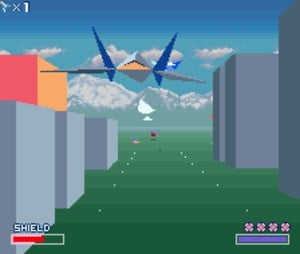
As a nation, the Japanese have gained a reputation of being particularly insular; despite their wholehearted acceptance of many aspects of western culture, they tend to regard their own products, traditions and population as superior.
Bearing this in mind, the success of Dylan Cuthbert and Giles Goddard – two British programmers whose talents scored them significant roles within the most famous video game company on the face of the planet – is remarkable.
Both men got sucked into the world of coding in a similar fashion. “My mum bought me a Sinclair Spectrum for Christmas when I was a wee lad,” recalls Goddard. “It didn't come with any games and I didn't have any money to buy any so I used to type in BASIC games from magazines. None of them ever worked of course, so I always had to fix them by hand. I think one day it occurred to me that it'd be easier just programming them myself instead.”
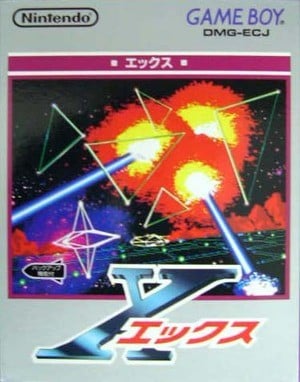
Cuthbert was also introduced to the pastime of programming via Sir Clive’s renowned hardware. “I learnt to program when I was 9 or 10 on a ZX-81 that was loaned to me from a friend's dad who bought it to try and turn it into a drum machine because he was a synth nut,” he says. “However, the ZX-81 doesn't have sound – a fact he neglected to check when he ordered it! So he gave it to me and I started typing in program listings of games from magazines.”
As fresh-faced youngsters, both Goddard and Cuthbert started their professional careers with UK firm Argonaut Software, headed by the near-legendry Jez San. The company had been founded by San while he was still in his teens and the 1986 smash hit Starglider had propelled the fledgling outfit into the video gaming elite.
“I left school before my A-Levels so had to find a job basically,” explains Goddard when asked how he became involved with Argonaut. “By this time I was coding demos for the Amiga and was experimenting with 3D wire frame stuff. I really wanted to do filled polygons but didn't have a clue how to render them. Around that time Starglider II came out and it was one of the first games to use filled polygons so it blew me away; a couple of months later I saw an advert looking for programmers at Argonaut.”
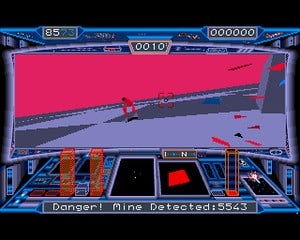
3D gaming was really coming of age thanks to the power of the 16-bit home computers and Cuthbert’s early encounters with San’s firm proved this point. “I applied for a job with my 2D games and got rejected,” he says. “I went away and made a 3D demo on the Amiga and sent it in a month later; Jez phoned me up and gave me a job.”
The first task that faced both men was converting the massively popular Starglider II to different formats. Goddard handled the Macintosh SE port while Cuthbert worked on the PC version. “It was a nightmare and I was in way over my head,” admits Goddard. “I barely managed to finish it mainly due to the fact that there was no info around about how to get to the low level hardware needed by the rasteriser. This was pre-Internet of course and the only lead I had was the ‘Apple User's Club’ somewhere in Aberdeen and they didn't have a clue what I was talking about.”
Despite these early difficulties, both Cuthbert and Goddard have happy memories of working under San’s command. “Jez was very hands-off, so it was quite pleasant and creative,” says Cuthbert. “I just got on and did my thing with little interruption.” Goddard is in agreement: “It was really good fun when there were about six of us, working in San’s house in North London being paid to do stuff I was already doing as a hobby in my bedroom back home. It was the ideal job.”
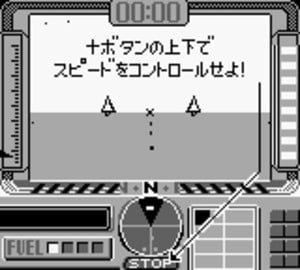
Argonaut Software’s output had a reputation for being on the cutting edge of video game technology, and this was reflected in the tasks assigned to the pair. “At one point I worked on the Konix Multisystem, an old console that didn't see the light of day,” remembers Cuthbert. “Then I was put on the Game Boy to see if I could make a 3D game on it.” This project would go on to earn considerable fame in Japan, but ironically would never see the light of day in the west. “Argonaut made their own Game Boy development kit by hacking one to bits and plugging cables in here and there,” recalls Cuthbert. “That's what I used at first. Jez approached Nintendo showing off the results: a 3D engine on the Game Boy.”
It was a bold move; unlike their western counterparts, Japanese gamers had yet to really take to the notion of gaming in three dimensions and approaching Nintendo – which was unquestionably the biggest video game manufacturer in the world at the time – smacked of overconfidence. However, the project clearly appealed to the Japanese giant; so much so that it moved to snap up the rights to Cuthbert’s creation.
“The 3D engine and game I had developed for the Game Boy were going to be published by Mindscape, but Nintendo bought the rights,” he explains. Originally entitled Lunar Chase, the game was renamed X at the behest of Nintendo president Hiroshi Yamauchi. Although it didn’t exactly set the sales charts alight, it clearly found an audience because Japanese publication Famitsu recently recognised it as one of the most influential Game Boy games of all time. “I’m not sure who it influenced but it was definitely flattering,” laughs Cuthbert. “I think it was an incredibly unique game for the time in Japan.”

Indeed, X was the first 3D title released for a portable machine in the territory, and in this respect was a truly groundbreaking piece of software. Ironically, it never got the chance to replicate this success in the US or Europe, where 3D was far better established than in Japan. “It was deemed unsuitable for the American market by the Nintendo of America execs at the time,” says Cuthbert. “They wanted to keep everything simple and Tetris-like.”
X was also a significant release because it paved the way for future collaboration between Argonaut Software and Nintendo. San’s company designed a graphics chip that could be placed inside SNES cartridges, dramatically boosting the 3D performance of the console: the Super FX chip.
The first game to exploit this hardware – Star Fox – would go on to become one of the most beloved titles on the console. “Myself and Giles were the two main programmers,” recalls Cuthbert. “We worked on location at Nintendo the entire time. The whole game was our domain and we worked very closely with Miyamoto, Eguchi and everyone else. A lot of the ideas came from us; the storyline and characters were totally Nintendo’s doing of course, but I did come up with the names for Fox McCloud, Slippy and Peppy. Falco was thought up by character designer Takaya Imamura.”
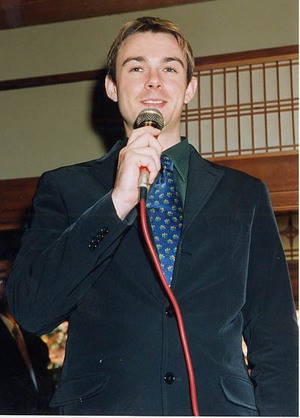
Star Fox was a considerable hit for Nintendo and unsurprisingly led to further work for the intrepid duo. Racing title Stunt Race FX (released in Japan as Wild Trax) soon followed (its development overseen by Goddard) while Cuthbert busied himself with the sequel to Fox McCloud’s debut. Sadly, despite being practically finished, Star Fox 2 never saw official release.
“The PlayStation had just come out as we were finishing things off and it overshadowed everything else – especially the Super FX Chip – and this was the main reason for stopping the release,” explains Cuthbert. “It was a shame but definitely the right decision; the SNES was looking older and older thanks to the release of the Saturn and PlayStation.”
For Cuthbert, this appeal of this powerful new 32-bit hardware was too much to ignore. “I moved on to Sony America because I wanted to work on the PlayStation,” he says. “I was truly awed by Ridge Racer as I was a big arcade game fanatic back then and the number of polygons the system was pushing was phenomenal for the time.” However, his former cohort decided to stay with Nintendo, albeit on a more permanent basis. “I'd been in Japan for over two years and had very little connection to the UK so I didn't want to go back,” Goddard explains.
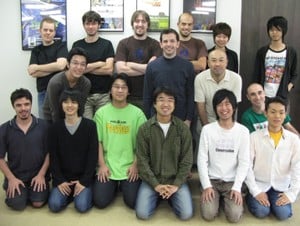
Contrary to popular opinion, Goddard found that finding acceptance as a westerner within a Japanese firm wasn’t a problem. “Apart from the usual ‘gaijin’ stuff, I was pretty much treated like anyone else,” he insists. “I think by the time I joined Nintendo I'd already proven myself with the two Super FX games. Also, a lot of Japanese business is done through ‘shoukai’; being introduced to another company by a company you're already doing business with.” Because of Argonaut’s previous positive dealings with Nintendo, Goddard’s route in was a relatively painless one.
Around about this time the N64 was nearing release. “In between projects I was in the Nintendo EAD (Entertainment Analysis and Development) tech group so we used to do lots of things that never saw the light of day,” Goddard recalls. “One demo I worked on depicted Link fighting an enemy; it that was used as a Zelda promo at the Shoshinkai show one year.”
Goddard was also the man responsible for one of the most groundbreaking technical demonstrations of recent times – the famous 3D Mario face that did so much to prove the raw power of the N64 when it was first revealed.
“It started off as a low-cost motion capture experiment,” he says. “I had fluorescent ping pong balls attached to my face one day when Miyamoto-san walked past wondering what the hell I was up to. He really liked the way you could pull the balls around to make funny faces and wanted to know if I could make it look more rubbery.”
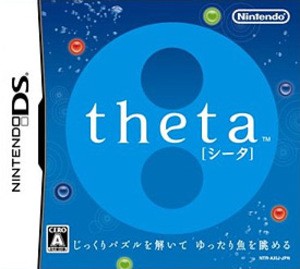
Next up was 1080 Snowboarding, which revolutionised the genre with its accurate physics and rewarding gameplay. “It actually started off as a skiing game that used Inverse Kinematics instead of animation for the player character,” reveals Goddard. “At some point we realised that snowboarding is lot more interesting because of the tricks you can do; it was also quite a new sport so everyone was doing it at the time. The Inverse Kinematics also proved to too hard to control so I only used it blended with other animations.”
Around the same time Cuthbert – who was firmly ensconced at Sony America across the Pacific Ocean – produced the 3D action title Blasto; he went on to be instrumental in prepping the world for the Playstation’s successor. “I made two or three of the early PS2 tech demos, such as the ‘duck in the bath’ demo that was shown around a lot,” he says. “It was rendering curved surfaces in realtime.”
After gaining valuable experience during their careers, Cuthbert and Goddard both decided they needed a fresh challenge and set up their own individual game studios – both on Japanese soil. Cuthbert founded Q-Games in 2001 after becoming disillusioned with his Sony-based surroundings. “I got tired of the rat-race inside corporations such as Sony, even though it was a fairly relaxed environment there, I could never really be as creative as I wanted to be,” he explains. “Also I missed Japan; I had just got married to a girl from Kyoto and wanted to move back there.”
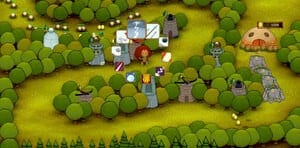
Q-Games has been involved with some very high-profile projects of late, but one sticks out in particular because Cuthbert has such a history with it. “Nintendo contacted me to see if I wanted to do Star Fox Command on the DS,” he explains. “Imamura – the original artist from Star Fox – came and worked very closely with us and we followed Miyamoto’s ideas for what he wanted to see in a DS version of Star Fox. It was fun working with the two of them again.”
However, Nintendo isn’t the only company from his past that Cuthbert remains on friendly terms with. “We started our own brand called PixelJunk, and are developing full-HD 2D games for the Playstation Network,” he says. “Our games in the PixelJunk series come directly from our creative side, with a strong emphasis on innovation. Not all the games are for everyone, but everyone should find something that tickles them in just the right spot.”
Goddard’s studio – named Vitei – also maintains a strong bond with Nintendo. “After leaving Nintendo and doing freelance for a while I was quite eager to get a team together again,” he says. The company produced the interesting DS title Theta, which sadly never saw release outside of Japan. “It started as one of our DS control experiments,” Goddard explains. “We were trying out various ideas that required two screens and touch input. I really like working on things that are unique to the hardware. I think the main reason behind it not being released outside of Japan was cost.”
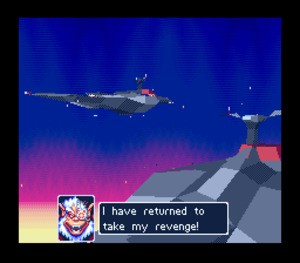
Cuthbert and Goddard’s story is an amazing one; for two Western programmers to scale the heights of Japanese video game development and then successfully establish their own studios based in Japan is almost inconceivable.
“I’m not sure if pride is the right word,” replies Cuthbert when asked how he feels about what he’s achieved. “I simply enjoy what I do and it’s great being able to work with a company like Nintendo who also enjoy what they do and follow the same kinds of principles we follow when we make a game – primarily because I make games in the way I learned during my time at Nintendo.”
Goddard’s reply is more succinct. “I'm proud of the games I've worked on” he says with a smile.
This feature originally appeared in its entirety in Imagine Publishing’s GamesTM magazine, and is reproduced here with kind permission.





Comments 20
pixeljunk series ftw! nice article btw
These guys need T-shirts that say "Japan thinks I'm smart."
Huh surprised not to see Steel Diver mentioned.
Man... I'd give almost anything to play StarFox 2
I believe Goddard was also involved in the GC version of Doshin the Giant. I loved that game.
Is that first picture a screenshot from StarFox for the SNES? I loved that game!
@3
Indeed, very odd to talk about Goddard's Vitei studio and not discuss its recent 3DS launch game, Steel Diver. I'd have enjoyed hearing Goddard's thoughts on the project, or at least a mention.
(The article was previously published, so I'm guessing it's simply out-of-date, but... a screenshot of Steel Diver to unite this story with a current game would have still been a nice touch! Then again, I also don't see any mention of Q-Games and DSiWare, which they've supported with 3 excellent titles.)
good story that interesting read
You know I can't see why Nintendo wouldn't release Star Fox 2 on the VC. Well I can see why, it was cancelled, but it'd be an awesome use of online distribution. Polish it off and give it a release - people will love to play a brand new SNES game that was developed in the mid-90's. Retro-looking games are all very well, but this would be the real thing and people would snap it up.
Of course, the original still has to be released first...
Edit: Almost forgot the reason I was posting ... I remember reading about these guys in the newspaper in the '90's.
Very nice article. Good read
@10: agreed. I've been waiting forever for Star Fox to be released, and would love to play Star Fox 2. I remeber thinking Star Fox was a sweet game back in the day when I played it at a friend's house. Never owned a Super, so I never got to play it all the way through. Star Fox 64 is however one of my all time favorites, and the rest of the games that came after that were crap.
Amazing guys there!
And wasn`t Q behind the epic Meteos game as well?
PS: I´ve been surprised about the Japanese regarding theirselfes as the best ones in the world. I´ve always thought of them as being more humble than anyone else.
PPS: And yes, some more SuperFX games would be great for VC. Especially StarFox 2.
@LTD: You're confusing Q-Games with Q? Entertainment. An easy mistake to make. Luckily, they both create fantastic titles.
Interesting and informative. These guys were quite influential weren't they?
Looks like most of the games they have done have all been very good, the Pixeljunk games are really good on PSN aswell. Have played for many hours Starfox 2 and its a real shame that it never got to see the light of day, i thought it was a big improvement on the first game and that was amazing. I always hoped that either SF2 would get released on VC or someone would make it available on a new Starfox game as either a bonus or unlockable.
Thanks sykotek.
Normally i would have checked myself. But i wrote this comment with my DSi browser so i wasn't really in the mood to jump back and forth to google or something.
One day...
One day we will have Star Fox 2...
Goes to show you that there are still very talented British Programmers that have been accepted in the biggest Japanese Studios when all we hear about recently is job cuts in the UK. A nice change anyway.
So that's where X-Scape came from.
I used to type in BASIC games from magazines too! Ahhh...I miss Gorillas and CIA Agent. Well, not CIA Agent so much... (text-based adventure games were, are and will always be terrible )
Show Comments
Leave A Comment
Hold on there, you need to login to post a comment...